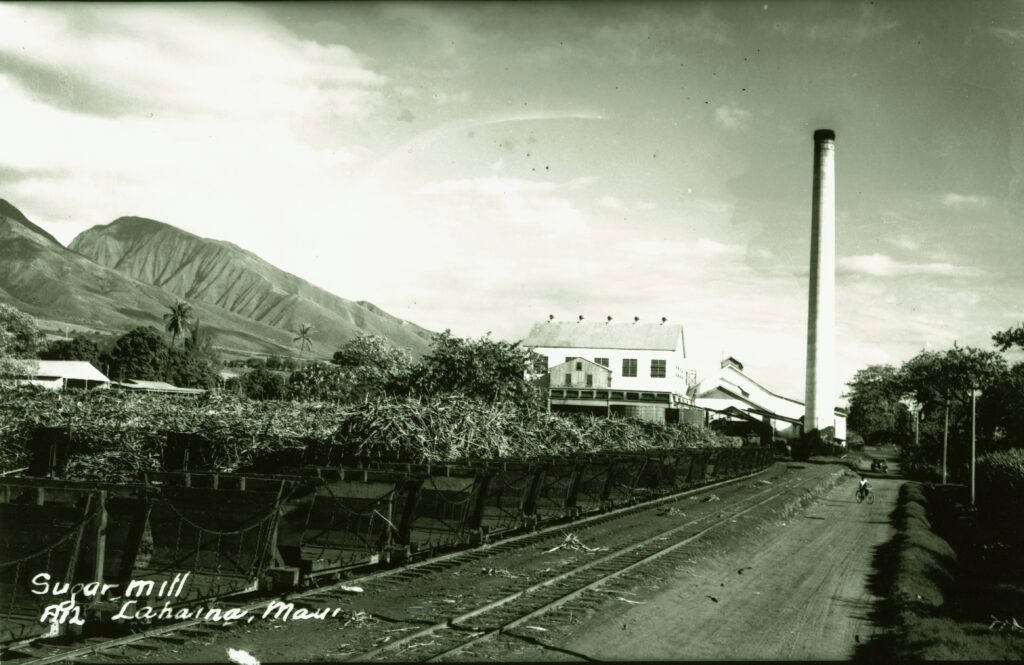A Cherokee Indian, John Neddles Anthony Chu Chu Gilman was born on August 1, 1777. (Chu Chu is a Cherokee name, not Chinese.) Some suggest he came from Natchez, Louisiana, or possibly Oklahoma. He arrived in the Hawaiian Islands about 1817. (“The Polynesian” Oct. 19, 1852.)
In the islands he was called Kuene, but also went by the names John Neddles and John Neddles Gilman (he’ll go by Neddles, here.)
He first married Louisa Piʻilani Poʻokui in March, 1820; they had four children. He was married a second time to Harriet Kapu Kewahaea of Kaʻawaloa, Hawaiʻi; they had four sons and one daughter.
Neddles had an adopted daughter, Louisa Chu Chu Gilman (November 13, 1828-November 30, 1909.) She married twice to Chung Hung (or Ahung,) and later Arthur Peter Brickwood.
Here’s a little side-story on one of the weddings. This is how Stephen Reynolds described his friend Ahung’s wedding: “April 19, 1843—Fine morn … Lord George Paulette (Paulet) and French Frere called on Ahung—took a piece of cake and glass of wine and went away. …”
“Evening Ahung was married to Miss Louisa Neddles by Richard Armstrong … French & American Consuls, E & H Grimes … and many others present. Came at 1/2 before 8 o’clock. Dancing at 1/4 past 8 til 11 … when everyone left apparently well pleased. … April 26, 1843—Went over to Hungtai’s to lunch many people in who were at the wedding.” (HHS)
Around that time, Paulet, representing the British Crown, overstepped his authority and seized the government buildings in Honolulu and forced King Kamehameha III to cede the Hawaiian kingdom to Great Britain. Paulet raised the British flag and issued a proclamation formally annexing Hawaii to the British Crown. This event became known as the Paulet Affair.
Queen Victoria, on learning these activities, immediately sent Rear Admiral Richard Thomas to the islands to restore sovereignty. The day began early that Monday, July 31, 1843, with soldiers and the public gathering at what we now refer to as Thomas Square.
After five-months of occupation, the Hawaiian Kingdom was restored and Adm. Thomas ordered the Union Jack removed and replaced with the Hawaiian kingdom flag. That day was known as Ka La Hoʻihoʻi Ea (Sovereignty Restoration Day.)
Back to Neddles.
He apparently performed services for the early Hawaiian monarchy and was rewarded with some property in Pālama/Kapālama on Oʻahu.
Because of its proximity to Honolulu and its rich lands, Kapālama was frequently distributed by the king to foreign business partners, as well as to lesser chiefs. (HH&F)
Testimony before the Land Commission noted, “Claimant received this land from the present King in 1833 and confirmed in 1835 by Kaikioewa, then Guardian of the King and he has ever since held it without dispute unto the present. The land originally belonged to the King and that of Kaʻaione which is outside of it.”
Most of these houses in the area were hale pili (grass huts, common at that time;) however Neddles had a wood-frame house on his land. He also had kalo land with several patches on his property.
Upon his return from a voyage to the Spanish Main in 1847, he discovered that “squatters” had settled on parcels of land belonging to him.
A notice in the newspaper he made in 1848 informed the public that he opened a Butcher’s Shop – (Choice pieces for family use were selling for 5-cents per pound.) He owned the schooner SS Honolulu (a newspaper announcement he made in 1851 notes the ship simply as “SS”) and was engaged in shipping produce and cattle between island ports.
He published a notice in The Polynesian, March 15, 1851 – “Caution – All persons are forbidden to trespass upon the land of the undersigned, at Waikakalaua. Horses of cattle found trespassing after that date, will be proceeded against according to the law.”
Records indicate that on April 5, 1850, Neddles became a naturalized citizen of the kingdom.
John Neddles Anthony Chu Chu Gilman died at the age of 75 on October 18, 1852. (Amos S Cooke was Administrator of the estate – Cooke and his wife were missionaries who had been appointed by King Kamehameha III to teach the next generation of the highest ranking chiefs’ children at the Chiefs’ Children’s School (Royal School.))










































